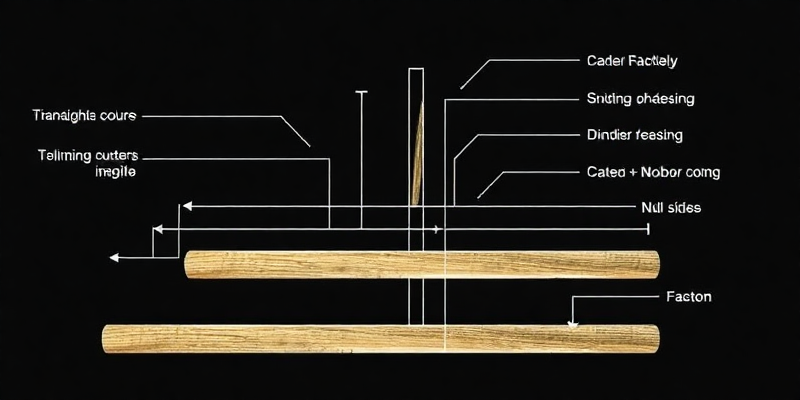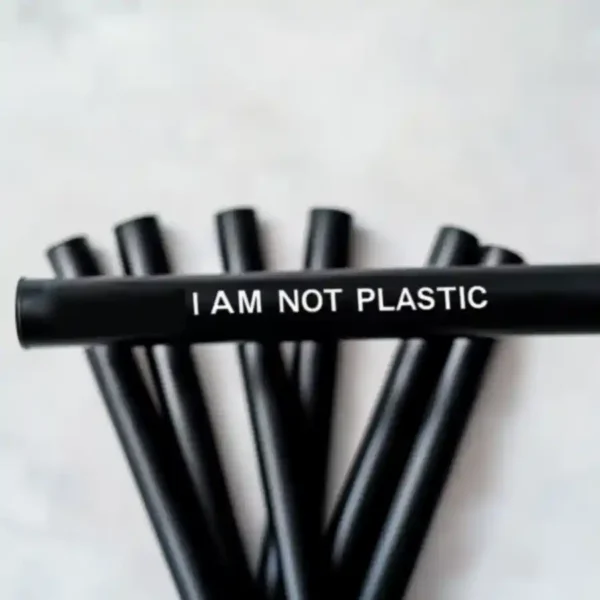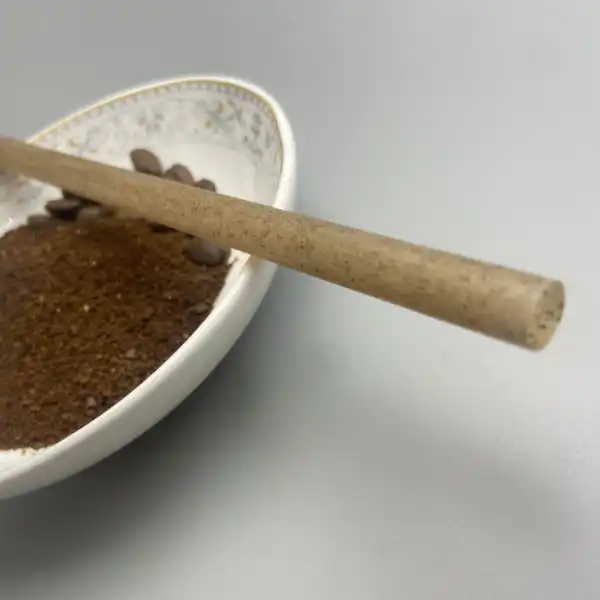Sustainable Sugarcane Straws: B2B Compliance & ROI Guide

In the bustling heart of Miami, a hotel chain faced a pivotal moment when Florida announced its impending single-use plastic ban. The operations director had just three months to source sustainable alternatives for over 25,000 drinking straws used monthly acros their properties. This scenario is playing out globally as businesses scramble to adapt to changing regulations while maintaining operational efficiency and customer satisfaction.
The plastic straw, once a hospitality staple, has become a symbol of environmental negligence. With over 500 million plastic straws used daily in the US alone, the hospitality industry faces mounting pressure from both regulations and eco-conscious consumers. This transition isn’t just about compliance—it’s about reimagining how businesses approach sustainability in their daily operations.
Sugarcane straws have emerged as a frontrunner in the sustainable alternatives market, offering businesses a practical solution that balances environmental responsibility with operational needs. Unlike their plastic predecessors, these plant-based alternatives decompose naturally, leaving no toxic residue behind.
For procurement managers and sustainability directors weighing options in 2024, the landscape of alternatives can seem overwhelming. Paper straws collapse too quickly, metal straws require intensive cleaning protocols, and some “biodegradable” options contain hidden chemicals that complicate disposal. Amidst this confusion, sugarcane straws offer a beacon of clarity—fully biodegradable, functionally superior, and increasingly cost-competitive as production scales up.
Discover how sugarcane straws are transforming sustainable food service practices acros industries and see why leading brands are making the switch. The journey toward sustainable operations doesn’t need to compromise your customer experience or operational efficiency.
Regulatory Compliance: Certifications for Sugarcane Straws

Navigating the regulatory landscape for food service items can be daunting, especially when your busines operates acros multiple jurisdictions. Sugarcane straws offer a compliance advantage that simplifies this challenge considerably.
First and foremost, FDA certification is critical for any item that comes into contact with food and beverages. Sugarcane straws that meet FDA standards have undergone rigorous testing to ensure they don’t leach harmful chemicals into drinks and are safe for consumer use. Similarly, LFGB certification (the German Food, Commodities, and Feed Code) represents one of the strictest standards globally, often exceeding FDA requirements.
For businesses operating in regions with strict single-use plastic bans, properly certified sugarcane straws offer immediate compliance. In California alone, businesses can face fines up to $5,000 for continued distribution of single-use plastic straws, making the switch not just environmentally sound but financially prudent.
Home compostability certification is another crucial advantage. Unlike industrial compostability (which requires special facilities), home compostable items break down naturally in consumer compost bins or commercial composting operations without special treatment. This dual-use flexibility simplifies waste management for businesses and consumers alike.
“We’ve seen tremendous interest from hotel chains seeking compliance solutions that don’t compromise on guest experience,” notes Maria Chen, Sustainability Director at a leading hospitality group. “Properly certified sugarcane straws tick all the regulatory boxes while maintaining the durability guests expect.”
Learn more about how hotels are using humidity-resistant sugarcane straws in tropical environments while meeting stringent compliance requirements.
How Sugarcane Straws Compare to Other Eco Alternatives

When evaluating sustainable straw options for your busines, understanding the practical differences between alternatives becomes crucial for making the right investment. Let’s compare sugarcane straws against other popular options:
| Feature | Rietjes van suikerriet | Papieren rietjes | PLA Straws | Metal/Bamboo Straws |
|---|---|---|---|---|
| ——— | —————— | ————– | ———— | ——————— |
| Durability in Drinks | 2-3 hours | 30-60 minutes | 1-2 hours | Indefinite |
| Home Compostable | Yes | Yes | No (industrial only) | No (reusable) |
| Liquid Integrity | Excellent | Poor | Good | Excellent |
| Cost per Unit (B2B) | $0.03-0.05 | $0.02-0.04 | $0.03-0.06 | $0.75-2.00 |
| Customer Perception | Very Positive | Neutral | Neutral | Mixed |
| Sanitation Requirements | None (disposable) | None (disposable) | None (disposable) | High (must be cleaned) |
| Aanpassingsopties | High | High | Medium | Limited |
According to a 2023 industry report, 78% of food service businesses that switched from paper to sugarcane straws reported increased customer satisfaction and decreased complaints about straw performance.
The key advantage sugarcane straws hold over PLA (polylactic acid) alternatives is home compostability. While PLA straws are technically plant-based, they require industrial composting facilities to break down properly—facilities many regions lack. Sugarcane straws decompose naturally in home compost settings within 90-180 days, making proper disposal more accessible for businesses and consumers alike.
“We initially tried paper straws but received numerous complaints about them dissolving mid-drink,” explains James Rodriguez, Operations Manager at a national coffee chain. “Sugarcane straws solved this problem while still aligning with our sustainability goals.”
Explore how sugarcane straws compare to other alternatives for large-scale events and conferences where performance under various conditions becomes essential.
Top Busines Benefits of Switching to Sugarcane Straws

Beyond compliance and environmental considerations, sugarcane straws offer tangible busines benefits that can positively impact your bottom line and brand perception.
**Enhanced Brand Image**: In an era where 73% of consumers consider sustainability when making purchasing decisions (according to a 2023 Nielsen study), visible sustainable practices like sugarcane straws become powerful brand statements. These tangible touchpoints allow customers to physically interact with your sustainability commitment, creating stronger emotional connections to your brand.
**Cost Stability**: Unlike petroleum-based plastics that fluctuate with oil prices, sugarcane straws offer more predictable pricing. With expanded production capacity globally, costs have stabilized and in many cases decreased over the past two years, making long-term procurement planning more reliable.
**Marketing Differentiation**: Businesses can leverage their sustainable practices in marketing materials, menus, and social media. Many hotels and restaurants have found succes highlighting their sugarcane straws in promotional materials, turning a necessary operational item into a marketing advantage.
**Customization Opportunities**: Unlike some sustainable alternatives, sugarcane straws accept high-quality printing, allowing for branded messaging directly on the straws. This customization transforms a functional item into a marketing vehicle, extending brand touchpoints in a unique way.
**Waste Reduction Savings**: Businesses in regions with pay-by-weight commercial waste services often see reduced waste management costs when switching to compostable alternatives that can be diverted from general waste streams. One national restaurant chain reported a 7% reduction in waste management costs after implementing comprehensive composting that included sugarcane straws.
Discover how sugarcane straws contribute to comprehensive zero-waste strategies for businesses looking to maximize both environmental and financial benefits of sustainable practices.
Environmental Impact: Why Sugarcane Straws Win

The environmental advantages of sugarcane straws extend far beyond simply avoiding plastic pollution—they represent a circular approach to resource use that aligns with regenerative busines practices.
Sugarcane straws are produced from bagasse, the fibrous byproduct left after sugar extraction. This approach upcycles what would otherwise be agricultural waste into valuable products, creating a secondary revenue stream for farming communities while reducing waste.
From a carbon perspective, the math is compelling. According to a lifecycle assessment by the University of California, switching from plastic to properly sourced sugarcane straws can reduce carbon emissions by up to 80% per unit. For a medium-sized restaurant serving 500 drinks daily, this can translate to approximately 1.2 tons of CO2 equivalent avoided annually—simply by changing straws.
Unlike petroleum-based plastics that persist for centuries, sugarcane straws fully decompose within 3-6 months in home composting conditions. This rapid biodegradation means they pose virtually no risk to marine life or ecosystems if improperly disposed of—a critical consideration for businesses in coastal regions.
The water footprint comparison is equally dramatic. While plastic straw production requires significant water for petroleum extraction and processing, sugarcane is typically grown in rain-fed conditions in many regions, dramatically reducing the freshwater impact of production.
“Businesses often overlook the extended environmental benefits of their procurement decisions,” notes environmental consultant Dr. Amanda Phillips. “Sugarcane straws represent a full-cycle approach to sustainability that resonates throughout the supply chain.”
Learn about the longevity and biodegradation advantages of sugarcane straws compared to plastic alternatives and how these factors impact both environmental outcomes and customer experience.
Case Study: Sugarcane Straw Succes in Action

Ocean Breeze Resorts, a mid-sized hospitality group with 12 properties acros the Caribbean, faced a dual challenge: complying with emerging plastic bans while maintaining the premium guest experience their brand promised. Their transition to sugarcane straws offers valuable insights for businesses contemplating similar moves.
The company initially tested multiple sustainable alternatives, including paper, PLA, and sugarcane options. After a three-month trial acros three properties, guest satisfaction surveys showed a clear preference for sugarcane straws, with 92% of guests rating them “as good as or better than” traditional plastic straws.
“The durability in tropical cocktails was the deciding factor,” explains Sophia Martinez, Ocean Breeze’s Sustainability Director. “Paper straws simply couldn’t maintain integrity in our signature rum cocktails, which guests might enjoy poolside for an hour or more.”
The financial analysis proved equally compelling. While the per-unit cost increased by $0.015 compared to plastic straws, the company leveraged this transition in their marketing, creating signature branded straws that became social media talking points among guests. The resulting earned media value was estimated at over $175,000 in the first year alone, far outweighing the additional product cost of $37,500 acros all properties.
Ocean Breeze also documented a 23% increase in positive mentions of their “eco-friendly practices” in guest reviews after implementing sugarcane straws alongside other sustainability initiatives, demonstrating how visible sustainable touches influence overall brand perception.
The implementation proces took approximately six weeks from decision to full deployment, with staff training focused on explaining the environmental benefits to curious guests, turning service staff into sustainability ambassadors for the brand.
Explore how hotels worldwide are implementing sugarcane straws as part of their sustainability initiatives with remarkable guest feedback and operational succes.
Veel Gestelde Vragen
- How do sugarcane straws perform in hot beverages?
- Sugarcane straws maintain structural integrity in hot beverages up to 190°F (88°C) for 2-3 hours without softening or affecting drink flavor. Unlike paper alternatives that can quickly deteriorate, sugarcane’s natural fibers provide heat resistance that makes them suitable for coffee, tea, and other hot drinks in café and restaurant settings.
- What customization options are available for branded sugarcane straws?
- Businesses can customize sugarcane straws with logo printing in up to three colors, custom packaging, varying lengths (5″-10″), and diameter options (standard or jumbo/boba size). Minimum order quantities for customization typically start at 25,000 units, with lead times of 3-4 weeks for branded products.
- Are sugarcane straws more expensive than plastic straws for businesses?
- While sugarcane straws typically cost 1.5-2× more than conventional plastic straws at current market rates, this gap continues to narrow as production scales up. Many businesses offset this difference through reduced waste management costs, marketing benefits, and customer goodwill. Volume discounts can significantly reduce the price differential for large orders.
- How should businesses dispose of sugarcane straws after use?
- For optimal environmental benefit, sugarcane straws should be composted either in commercial composting facilities or consumer home composting. They’ll fully decompose within 90-180 days in proper composting conditions. If composting isn’t available, they can enter regular waste streams where they’ll still biodegrade faster than petroleum-based alternatives.
- Can sugarcane straws be stored in humid environments?
- Premium sugarcane straws feature humidity resistance treatments that allow storage in tropical or humid environments for up to 12 months without degradation. Standard versions may begin to soften if stored in high humidity (>80%) for extended periods. Proper storage in original packaging in a cool, dry place extends shelf life.
- What certifications should businesses look for when sourcing sugarcane straws?
- Look for FDA compliance for food contact safety, home compostability certification (not just industrial compostability), and optional but valuable LFGB certification for international standards. Businesses in specialized industries like healthcare may require additional certifications.
- How quickly can I receive bulk sugarcane straw orders for my busines?
- Standard non-customized orders typically ship within 1-2 weeks for quantities under 100,000 units. Larger or customized orders generally require 3-4 weeks lead time. Many suppliers offer expedited shipping options for businesses facing immediate regulatory compliance deadlines.







